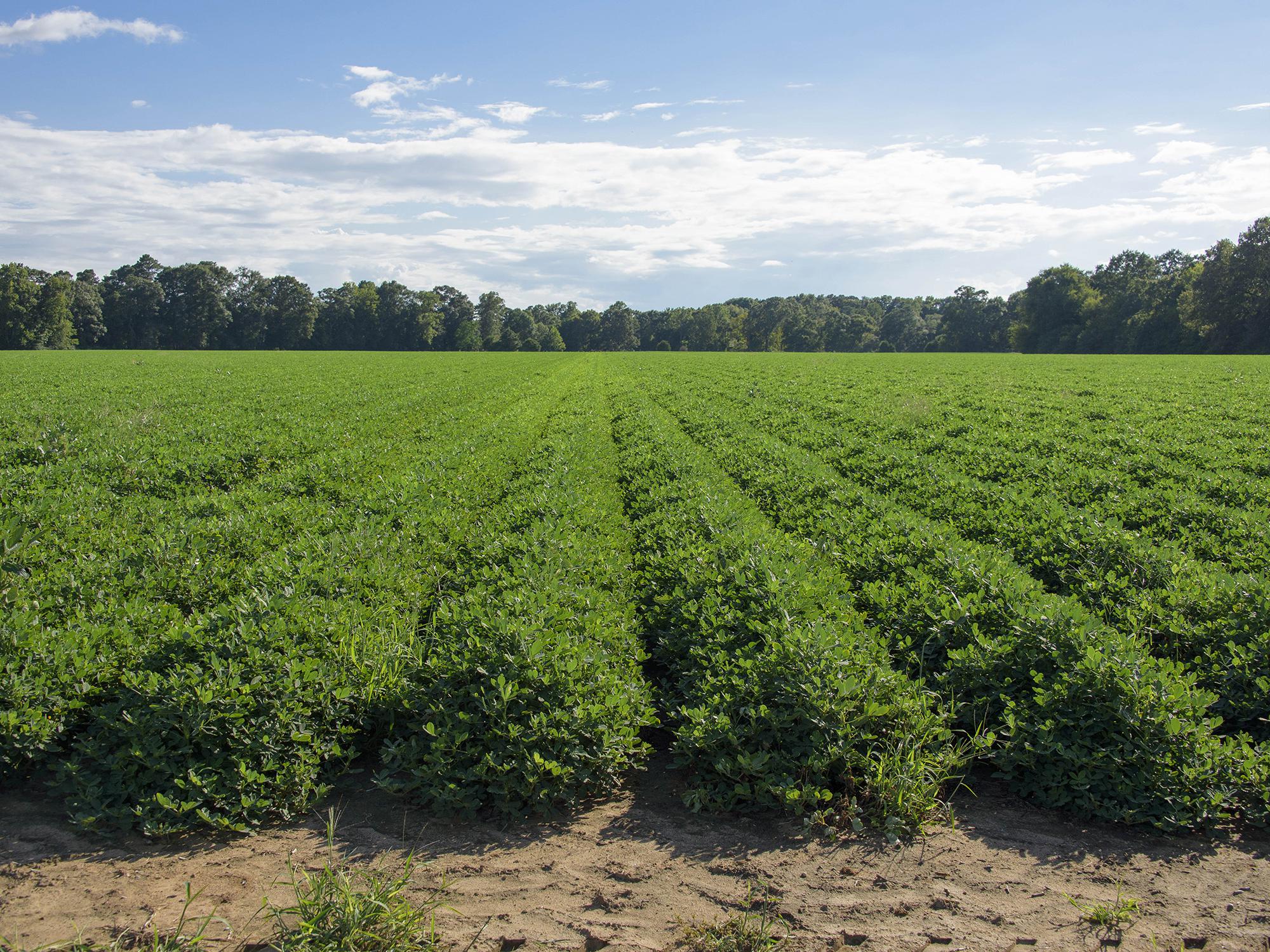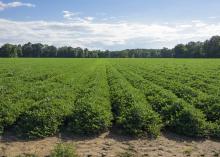Information Possibly Outdated
The information presented on this page was originally released on August 12, 2016. It may not be outdated, but please search our site for more current information. If you plan to quote or reference this information in a publication, please check with the Extension specialist or author before proceeding.
Timely rains, few issues indicate good yield
RAYMOND, Miss. -- With few problems this year, Mississippi’s peanut growers should see a good crop.
“Overall, peanuts are doing very well,” said Jason Sarver, Mississippi State University Extension Service peanut specialist. “Peanuts in south Mississippi received consistent rain throughout the season. We were really dry for a while across northeast Mississippi and the Delta. But between days 70 and 80, we started catching some rains across both regions that helped make a nice crop.”
According to the U.S. Department of Agriculture Mississippi Crop Progress and Condition Report, peanuts were pegging at 96 percent for the week ending Aug.7. Sixty-nine percent of the crop is in good to excellent condition.
Disease and insect problems have been minimal. However, late summer heat and humidity coupled with dense, bushy plants present perfect conditions for Southern blight, a soil-borne fungal disease.
“Year in and year out, it is our biggest problem in peanuts,” said Sarver, who is also a researcher with the Mississippi Agricultural and Forestry Experiment Station. “For the last few weeks, most of my calls have been about Southern blight. There is nothing unusual about this year; we just have the right conditions for it to really take off.
“We’ve also seen a high level of defoliating caterpillars in the last month or so, but growers are treating both issues with proper fungicide and insecticide applications,” he said.
The USDA Mississippi Acreage Report released June 30 estimates planted acres at 40,000. That amount is slightly lower than last year’s 43,000 acres.
Sarver estimates harvest will begin around Sept. 10 with good yields.
“That is a little earlier than usual to begin digging, but our spring warmed up, we got rains at the right time, and we had enough heat units to mature the crop,” he said. “Yield should be better than last year, as well. Growers averaged 3,400 pounds per acre last year. We could get over 4,000 pounds per acre this year.”
Brian Williams, Extension agricultural economist, said low prices for other row crops, such as soybeans and corn, in the last few years prompted growers to plant peanuts as an alternative.
“As a result, we saw a boost in acres for the 2015 crop, and while acres dropped off in 2016, they are still much higher than two years ago when statewide acreage was about 30,000,” Williams said.
Estimated peanut prices for the 2016 crop are just over $360 per ton, down slightly from $380 per ton one year ago, Williams said.
“The increase in acres and production have substantially increased our peanut stocks, which have pushed prices down,” he said. “However, it looks like we may have record peanut exports this year, which could eat into our surplus and provide a needed boost to markets.”



